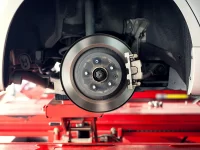How to Prevent Your Car from Being Repossessed Even After Defaulting On Your Car Loan

Considering cars are an essential component of the American way of life, you would normally go all out to ensure that you do not default on your car loan and risk your precious vehicle from being repossessed by the lender. However, the state of the economy being what it is, according to a Federal Reserve Bank of New York study quoted by http://fortune.com, “a record 7 million Americans are 90 or more days behind on their auto loan payments.” If you are also in the same boat, it becomes very important for you to resolve the debt, protect the car from being repossessed, and also safeguard yourself from a deficiency judgment that may require you to liquidate other assets just to stay out of jail. The various options that are available to you are:
Makeup on the Loan Arrears
If you have missed out on making only one payment, you should not panic because it may not mean that you are in default. Some lenders may classify you as a defaulter even when you are just a few days late with the payment while others may allow a grace period of 30 or more days. Generally speaking, you are not considered to be a defaulter until your lender serves a notice on you in writing. You can easily save yourself the anxiety of creditor action by paying the missed payment amount. Make sure you also pay the prescribed late payment fees and penalties to prevent the lender from claiming that you did not make the entire payment, as required by the terms and conditions of the loan agreement.
Reinstate the Loan
When you have defaulted on the loan, you are eligible to prevent your car from being repossessed or get it back if it has already been reclaimed by reinstating your loan. Essentially the loan reinstatement process involves bringing your car loan account up-to-date by making all the payments that you have missed along with the applicable charges and penalties, usually in one lump sum. In legal parlance, loan reinstatement is also known as the right to cure the default, however, you need to be careful as it cannot be taken as an automatic right since some states may not allow it if the loan agreement does not specifically provide for it. Loan reinstatement can, however, be done only once during the period of the loan, as subsequent defaults are usually not allowed by the lender.
Redeem the Car
If your car has already been repossessed due to your having defaulted, you still have the right of redemption till such time the car has not been sold off by the lender. Redemption involves paying up of the amount that was due to the lender along with all the fees and charges for late payments, cost of the repossession, storage, and even the legal costs incurred by the lender for the repossession. Generally, car redemption is not a practical proposition for anyone who does not have the cash to pay the monthly installments. Redemption is effective if the loan balance is relatively small and the car is worth much more.
Refinance the Car Loan
If you find that you are habitually unable to pay the monthly loan installment, you can approach the lender with a request to extend the loan period. This will bring down the monthly payment to an amount that is more affordable by you; however, you need to appreciate that you will end up paying more interest over the full period of the loan. If the original lender is unwilling to accommodate your request, you can find another lender to refinance the loan at a lower rate of interest or a longer period. However, you need to evaluate the wisdom of refinancing the car loan with a new lender by taking into account the impact of the finance and documentation charges as well as the applicable rate of interest. If the car is already three or four years old, it would have depreciated a lot, and taking the new loan may result in you being upside down on the loan. Additionally, if the new lender asks for a hefty down payment, it might not be worth the effort after all, according to a NationaldebtRelief.com consultant.
Negotiate With the Lender
Lenders extend the loans to make money by way of the interest and other charges. They really do not like repossessing the vehicles because then they have to bear the burden of the litigation, the expense of the repossession, the storage of the vehicle, as well as the trouble of reselling it to recover their dues. If you are able to convince the lender that there were genuine reasons of hardship due to which you had defaulted such as a medical emergency, loss of employment, death or divorce, etc., he may give you a fresh chance. You may be able to convince him to offer you a lower rate of interest, waiver of the penalties and charges, or even an extension of the loan period to make the monthly payment more affordable.
Sell the Car by Yourself
Repossessed cars generally do not fetch very good prices when they are sold by the lender because typically only hard-nosed used car dealers buy them in the auctions. You can offer to sell the car yourself for a better price and pay off the loan balance. Normally lenders are amenable to this kind of a request because it saves them a lot of trouble and expense of advertising and auctioning the vehicle. However, you will normally have a very limited time period to sell off the car after identifying ready buyers. Surrendering the car is also an option if the lender agrees to reduce or waive off the deficiency because he does not have to engage in a repossession exercise.
Conclusion
No car owner will want to face trouble with his lender and face potential repossession due to missed loan repayments. However, there can be circumstances due to which the payments may be missed or you might be forced to default. When this happens, repossession is a distinct and very real possibility. However, while you can take a number of steps to prevent this from happening, all of them involve you coming up to speed with the loan repayment, preferably with the cooperation of the lender to prevent undue stress.







